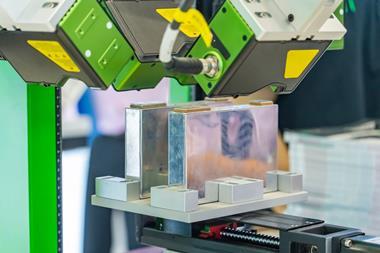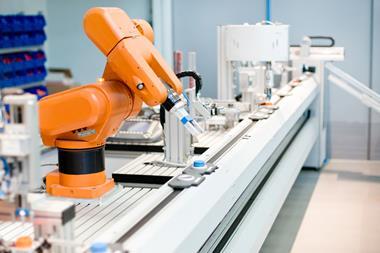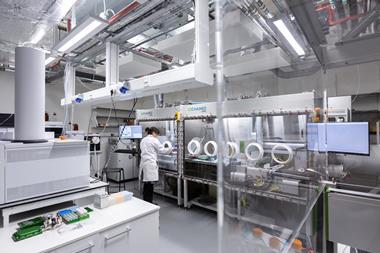Researchers have developed a robot that brings speed, agility and reproducibility to laboratory-scale coin cell batteries.
Until now, laboratories studying battery technology have had to choose between the freedom to iterate and optimise battery chemistry by manually assembling each individual cell, and the reproducibility and speed of large-scale production. AutoBass (Automated battery assembly system), the first laboratory-scale coin cell assembly robot of its kind, is designed to bridge this gap.
Developed by a team from Helmholtz Institute Ulm and Karlsruhe Institute of Technology in Germany, AutoBass promises to improve characterisation of coin cell batteries and promote reproducibility by photographing each individual cell at key points in the assembly process. It produces batches of 64 cells a day.
A robotic arm (Robot A) mounted on a linear track picks up and transports components to a central assembly post using vacuum gripping. The assembly starts with the anode cap, spacer, then the anode. A rotating tap fed by a computer-controlled syringe precisely dispenses the electrolyte. The separator is added, and the rotating tap dispenses more electrolyte. Robot A selects and places the cathode and the second spacer places the spring using mechanical gripping, then places the cathode cap.
A second fixed robotic arm (Robot B) picks up the assembled and filled cell, aligns all the components, and transports it to the crimper. After the battery has been crimped, Robot B removes the completed cell from the crimper and returns it to the assembly post. Robot A picks up the completed cell, and places it in the slot that previously contained its cathode cap.
Since cell-to-cell consistency is essential for characterising and optimising battery chemistry, AutoBass photographs each cell after the anode, spacer and cathode have been placed.
64 cells a day is just the beginning. The team has begun work to choreograph each component’s movement so that the robot can assemble more than one cell at a time, doubling the robot’s daily output and saving researchers days of painstaking battery assembly in a glove box.
References
This article is open access
B Zhang et al, Digital Discovery, 2022,1, 755 (DOI: 10.1039/d2dd00046f)
Additional information
AutoBass is open-source. The code required to run the robot, a description of mechanical parts, and a manual for assembly and operation are available on GitHub.












No comments yet